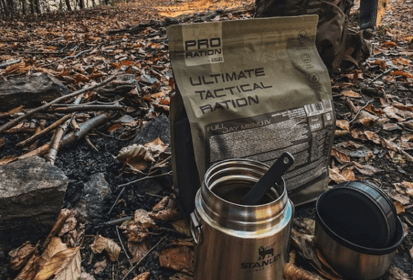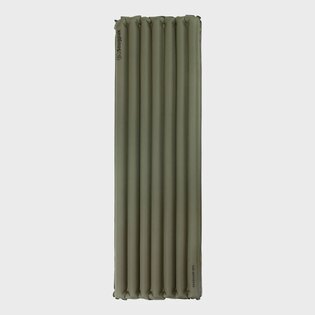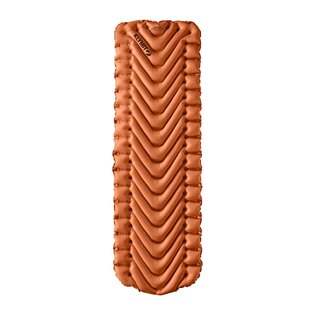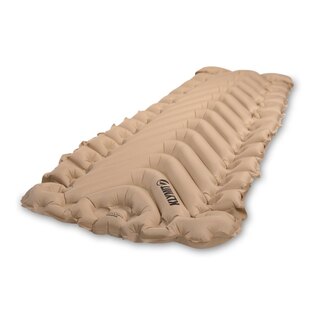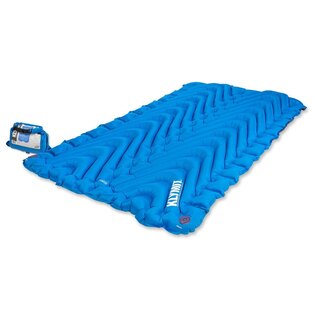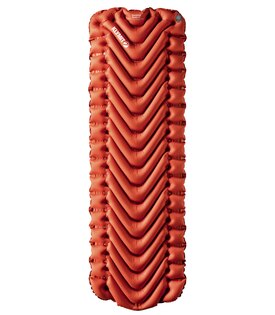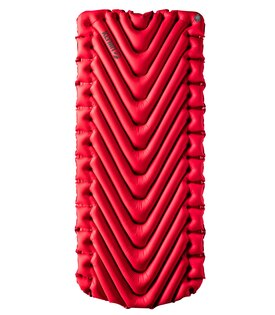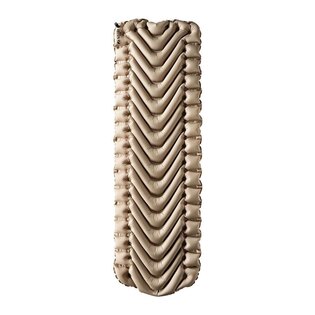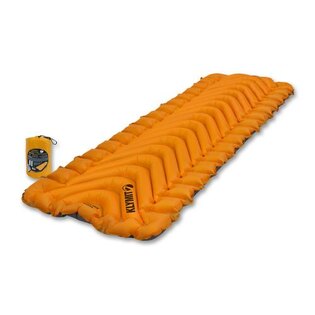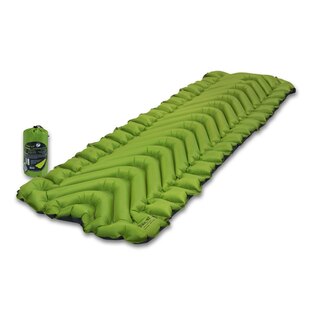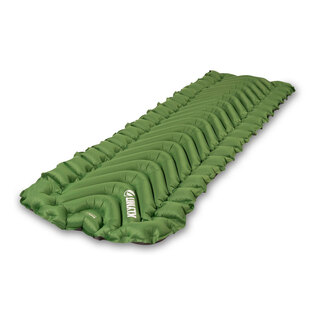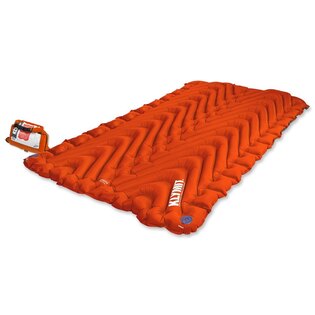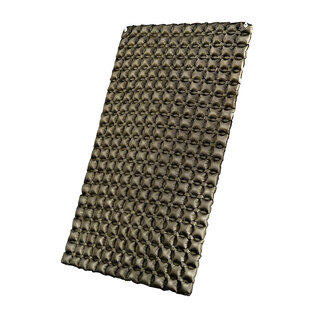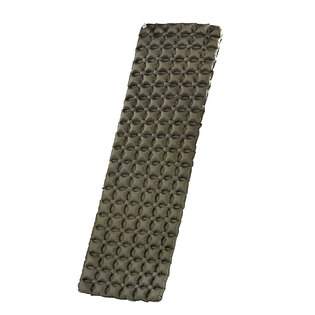Sleeping mat, quilt, underquilt? How to know what to choose?
Autumn camping requires good thermal comfort when sleeping. We are all familiar with sleeping mats. But are you using the right type? How are you doing with quilts and underquilts? How about a hammock-cocoon-snugpak-olive">cocoon? In this article, we will clarify all these concepts. We'll summarize the basic parameters of these products, including their advantages and disadvantages, but we'll also talk about how to combine them appropriately.
Sleeping mats are classics
Good sleeping mat belongs to the most basic elements of the outdoor equipment. There is a reason to it, because it has a fundamental effect on sleep comfort. Despite the fact that there are several basic types available today and new and better innovations, materials and construction solutions appear on the market regularly, many people still think of a classic roll-up "foam mattress" under the term "sleeping mat".
Such a foam mat used to be rolled into a bulky cylinder and attached somewhere on the backpack. It didn't insulate much from the ground, it didn't provide much comfort, and it liked to tear a lot. Fortunately, times have moved on and even today's foam mats are something else entirely.
Insulation in the main role
The main purpose of a sleeping mat is its ability to thermally insulate from the ground. For this reason, mats are made of materials that have good thermal insulation properties or are designed to achieve the required level of insulation (e.g. inflatable mattresses). At the same time, they should be light, compact and easy to pack.
Of course, different materials and designs have different lifetimes, depending on mechanical resistance, overall processing, and last but not least the way they are used.
An important factor for the right choice of a mat is its thermal resistance (or heat-insulating properties), which is indicated by the R-value. Roughly speaking, the higher the R-value, the higher the thermal insulation - i.e. the ability to withstand the cold.
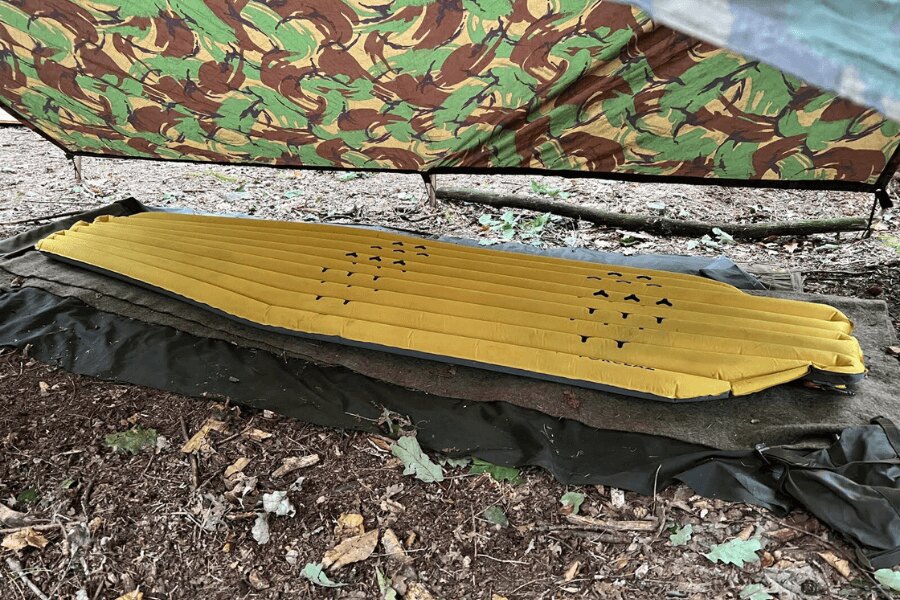
The advantage of inflatable sleeping mats is their low weight, good collapsibility and thermal insulation.
Basic types of sleeping mats
There are 3 types of sleeping mats on the market. These 3 categories can then be further subdivided according to length, width, thickness, type of use (e.g. hammock mattress) and, of course, the R-value mentioned above.
- Foam sleeping mats are practically the basic type of mats, but even here the offer has shifted from classic smooth mats to profiled mats, which increase thermal insulation properties thanks to air gaps. They can also be composed of several different materials increasing both thermal and user comfort (a denser/stiffer foam as the contact surface with the terrain and a softer upper). In general, however, it can be said that such a mat, whether made of one material or "sandwiched" from several layers, does not particularly absorb unevenness, so sooner or later you will feel some pebble, stick or root that you overlooked when choosing a place for the overnight stay.
- Inflatable sleeping mats are an increasingly popular product, among other reasons because of their consistency - you can pack the mattress into a very compact package after its deflation. So these are no longer some sort of bulky inflatable "beds". User comfort and thermal insulation also play a big role - in many cases this is higher than with foam mats. However, they can sometimes have a higher weight than foam mats. It is very important to choose the right materials for inflatable mats, as they are more vulnerable to mechanical damage (punctures, wear and tear, etc.). With cheaper models you may also encounter more difficult inflation.
- Self-inflating sleeping mats generally have similar parameters to inflatable mats, with the only difference being that they "inflate" themselves after opening the valve. I use quotation marks because I have not yet come across a technology that could inflate the mat to the required stiffness by itself, so I had to help it by myself anyway (lungs). The disadvantage of self-inflating mats is their weight, which is usually higher than that of inflatable mats. And if you are going on a longer trek and count every gram, this group of mats is probably not for you.
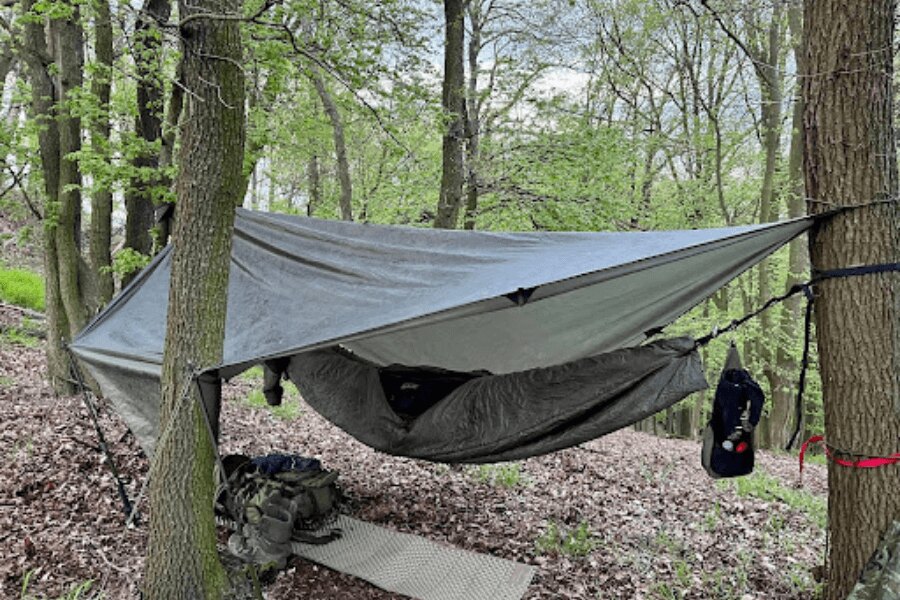
Sleeping mat in the combination with a hammock can be used not only as a base layer under the body, but also for sitting as a protective base when the ground is wet.
What to look for when choosing
In order to choose the right sleeping mat, you need to answer the basic questions:
- In what time of the year will I use the mat? A mat with low thermal resistance will be more than enough for the summer months. Normally, R = 2 and below will be good for this period. For use from spring to autumn, choose mats with a resistance of 2 to 4. And if you sleep outside even in winter, in the snow or intend to travel beyond the Arctic Circle, then of course look for values of 5 and above.
- In a tent, under the stars or in a hammock? Apart from the hammock mat, there is not that much difference between a tent and sleeping "under the stars" (in terms of the mat). In a tent, however, there is a lower probability of damage to the mat thanks to the tent floor. With sleeping rough, it is more appropriate to choose contact materials on the basis of mechanical resistance. For the hammock, you will need to find a mat designed for this, as the regular mat used in the hammock does not stay in place very well (especially if you move around in your sleep like I do).
- How often? If you go out to sleep in a tent once a year in the summer, nothing prevents you from purchasing a profiled foam mat in a lower price category. However, if you go on multi-day treks (year-round), then you will probably be looking at durable inflatable mats with a high R-value. It should be noted here that you will pay extra, but it will be money well invested.
- What size? Here the answer is simple, choose the mat according to the length of your sleeping bag (ideally your height + 15 cm). You just don't want to wake up with your head or feet outside the mat (especially in high humidity).
General advantages and disadvantages of sleeping mats
Advantages:
- low weight,
- foldability (better for inflatables),
- wide range of uses (tents, hammocks, or even sleeping in the car),
- wide range of products on the market,
- in the case of inflatable mats with high thermal resistance, there is no problem to use them even in summer days (i.e. one product for all seasons).
Disadvantages:
- lower mechanical durability,
- you have to find a suitable location (slopes, uneven ground, etc. are a problem).
Fun fact: I have been asked a couple of times why anyone would need a mat when they have a sleeping bag, if just an ordinary tarp is not enough. Well, everything mainly depends on the resistance of each individual and their thermoregulatory abilities. However, the sleeping bag is only functional if its insulating layer is not compressed. When you are lying down, the insulating layer of the sleeping bag under you is compressed to practically zero, so it does not insulate from the ground. That is why the mat is used.
hammock-under-blanket-snugpak-olive">Underquilt for the maximal comfort in a hammock
Hammock mat is a good thing, however, there's one important thing to note - it's still just a layer underneath your body (in some cases it also partially covers your hips). When, for example, a cold wind blows from the side, the mat insulates less than the hammock-under-blanket-snugpak-olive">underquilt, and this can cause you considerable discomfort. When sleeping in a hammock, it is therefore advisable to consider whether an underquilt is a better solution.
What is an hammock-under-blanket-snugpak-olive">underquilt?
hammock-under-blanket-snugpak#38545">Underquilt (short UQ) is designed only for sleeping in a hammock. It is actually an outer cover for the hammock that provides the user with full thermal insulation over the entire area of the hammock (bottom and sides). There are many variants to choose from on the market, made of different materials and with different thermal insulation properties.
As for the filling, it is not particularly different from sleeping bags, synthetic and feather fillings are also represented here. It is then up to each user what is closer to him. With feather fillings, as with sleeping bags, you need to pay attention to moisture, in which case it will take a long time to dry. Synthetic fillings do not suffer from this ailment. On the other hand, the advantage of feather UQs is their lower weight and smaller dimensions when packed.
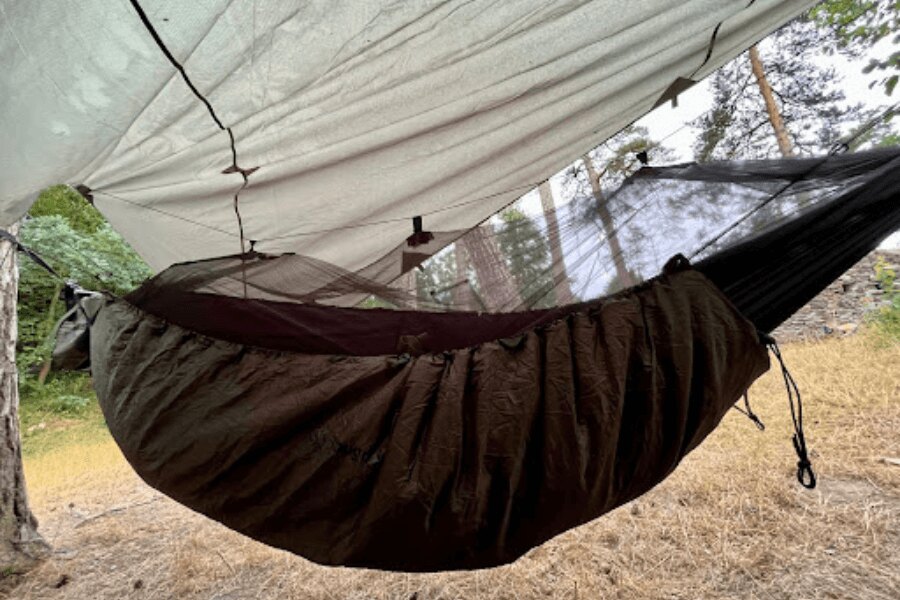
hammock-under-blanket-snugpak-olive">Underquilt is an ideal choice for solution of the hammock thermal insulation.
As for the seasons, it's the same as with sleeping bags. On the market, you can choose from thin summer underquilts to serious winter pieces. For UQ, in addition to the R value, the manufacturer also indicates the range of recommended temperatures for their use.
TIP: Some UQs can be used as temporary blankets, for example when it is warm and there is no wind. So you don't need to take a sleeping bag with you in such conditions. However, watch out for your back getting cold in the hammock, being insulated from above and leaving your back free may not be worth it.
The main disadvantage of using UQ, as with hammock mats, is the sleeping position. Most of the hammocks on the market today are designed in such a way that you do not lie "like a banana", but diagonally. As a result, you lie flat without the typical bending. You probably won't be able to do this using UQ or a mat.
General advantages and disadvantages of hammock-under-blanket-snugpak-olive">underquilt
Advantages:
- high thermal insulation,
- ideal for use with a hammock,
- can be used as a blanket instead of a sleeping bag on summer days,
- with UQ designed for temperatures below freezing you probably won't need such a "powerful" sleeping bag (according to experience, a weaker sleeping bag with comfort temperatures a class lower than in combination with a mat is sufficient).
Disadvantages:
- the hammock cannot be used diagonally,
- you probably won't use the winter UQ in the summer, so you can't avoid buying the summer and winter versions if necessary,
- much larger volume when packed (e.g. compared to an inflatable mat).
Quilt - sleeping bag or blanket?
Quilts are actually something between a sleeping bag and a blanket, they are not so widespread on the market yet and not many people have come across them. It is therefore a kind of design compromise and its ideal use is in combination with a sleeping mat or a hammock.
Main elements of the quilt
The quilt does not have a bottom layer and a hood, but it does have a lower leg pocket (approx. calf to knee level). As we said above, the lower compression of the sleeping bag wall does not insulate, so the manufacturers thought, why not just leave out the wall and the hood, when the insulation is replaced anyway by a mat (we are talking more about inflatable mats) or an hammock-under-blanket-snugpak-olive">underquilt, in the colder season you have a jacket with a hood or cap with you anyway.
Although the quilt is structurally modified in this way, it is still equipped with an inner pocket or pockets, as is the case with sleeping bags. Their "attachment" system differs depending on the manufacturer. Individual quilts (i.e. without additional attachment to the base layer), quilts with the possibility of attachment under the mat using elastic ropes or quilts fixed using special attachments that are attached to the seams of the mat.
A big advantage of quilts is the saving of weight and dimensions when packed, so bike-packing, high-altitude hiking and similar activities are activities made for quilts.
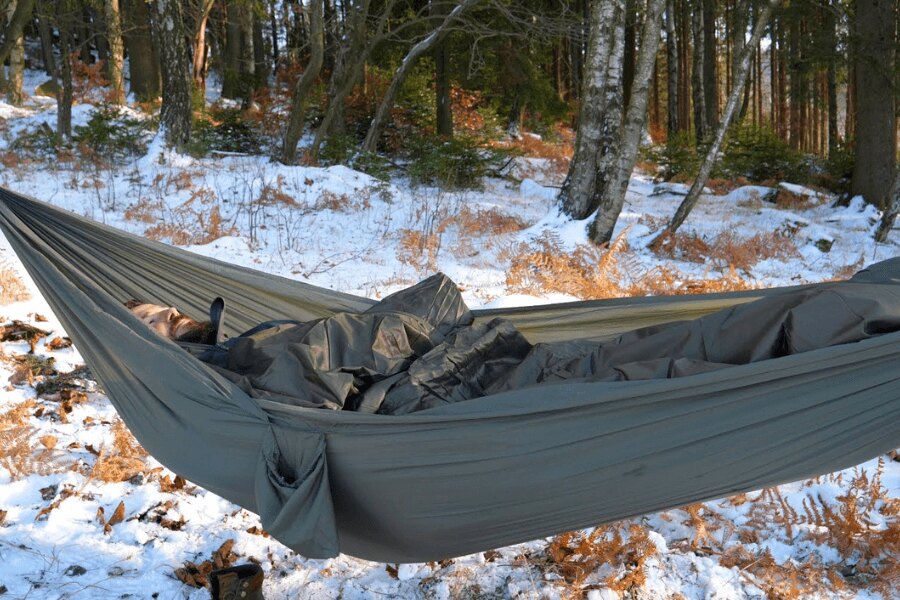
A quilt is basically something between a sleeping bag and a blanket. It has some specific design features such as leg pocket and inner pockets.
General advantages and disadvantages of a quilt
Advantages:
- lower weight than sleeping bags,
- the ideal choice for low-weight hiking,
- smaller dimensions when packed than sleeping bags,
- suitable for 3-season use.
Disadvantages:
- some may not like the lack of a bottom part and hood,
- less suitable for winter,
- not as widespread on the market as other solutions.
Special product category
Cocoon
Some of you may have heard or read about the so-called hammock-cocoon-snugpak-olive">cocoon-snugpak-oliv#36228">cocoon. This is a unique product that is only used in combination with a hammock and you can practically use it in the spring/autumn/winter seasons when night temperatures drop below 10 degrees.
In simple terms, this is a long "hammock sleeping bag", where the hammock itself is threaded through the holes at its ends. This wraps the entire hammock from all sides. Imagine an underquilt, but with insulation above you. The upper side of the cocoon is zipped, so you can zip up the entire length or just leave a smaller opening in the head area (in case some of you don't feel comfortable zipping up completely).
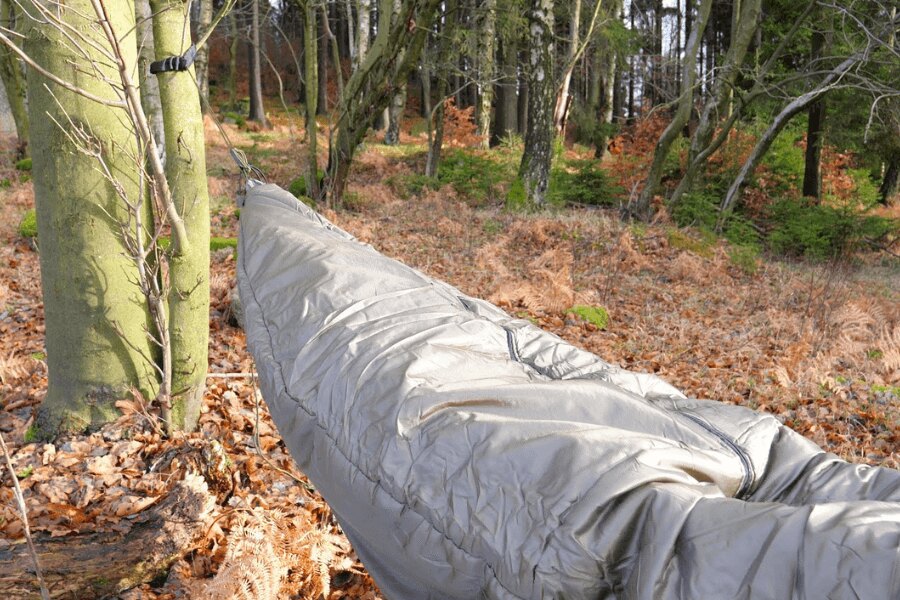
Sleeping mat, hammock-under-blanket-snugpak-olive">underquilt, quilt and cocoon can be combined under certain conditions.
Such a solution is superior in terms of thermal insulation. In fact, you will heat up the entire interior space and the heat will not escape almost anywhere, and you are still in a sleeping bag or quilt. You don't have to worry about the interior space being airless, as the holes at the ends are sufficient for the supply of fresh air. But we are definitely not talking about a wind draft.
From my own experience, I don't go out with anything else in the winter (that is, if I'm not limited by the fact that there are no trees anywhere). At temperatures around 0 degrees, a sleeping bag with a comfort temperature of 7 degrees was more than enough for me. In the freezing cold, it is more appropriate to equip yourself with a winter sleeping bag (even then, it can happen that you only have a sleeping bag up to half of your body).
However, you will no longer use the hammock-cocoon-snugpak-olive">cocoon in the summer months. Firstly, because most hammocks already have an integrated mosquito net through which you cannot close the cocoon, and secondly, because you would simply burn up yourself.
How to combine these products?
Sleeping mats in combination:
- with a tent, tarp, hammock (not ideal),
- with a sleeping bag and a quilt, or just a blanket or blanket sleeping bag.
In fact, practically everywhere you use the sleeping mat.
Underquilts in combination:
- only with hammock,
- with a sleeping bag or quilt (according to a season),
- with a blanket sleeping bag,
- in summer temperatures you can use only the UQ without a blanket.
Quilts in combination:
- with a sleeping mat,
- with a hammock,
- and also above mentioned cocoon.
Final note
Whether you're looking for a sleeping mat, a quilt-snugpak-oliv#36227">quilt, an hammock-under-blanket-snugpak#38545">underquilt, or you've got your eye settled on the cocoon itself, it's always better to read user reviews. But the very best thing is to try it yourself (a friend of yours can lend it to you, or you can ask someone who has one of the products you have chosen). Then all you have to do is go out and test. So good luck with your choice and we wish you lots of pleasant and undisturbed sleep.
Readers are further interested
